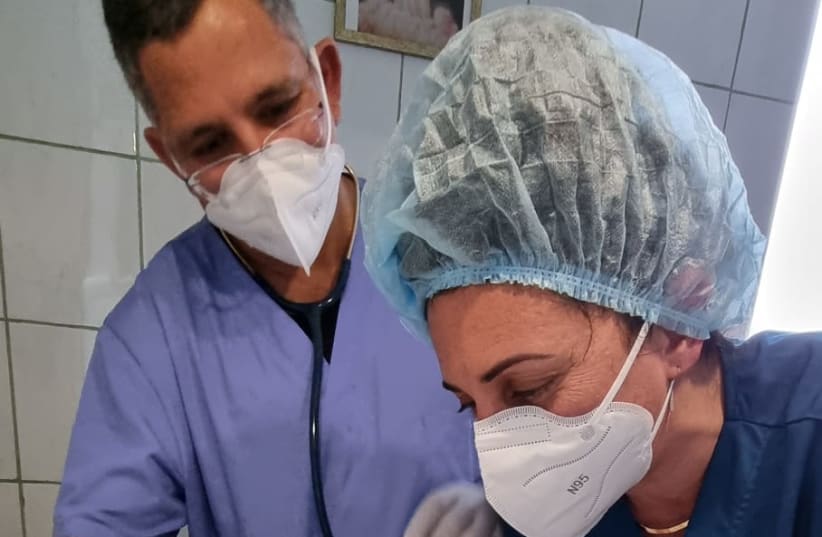If you frequently visit social media, you likely came across the story of Einav Bublil, who recently gave birth to her fifth child via French cesarean section (FAUCS).
Since we don't usually hear about this operation often, we wanted to check how it differs from a regular cesarean section.
Let's start with the name.
The French cesarean section is named after its inventor, French surgeon and gynecologist Dr. Denis Fauck.
The operation is carried out slightly differently than a normal cesarean section and as of the time of writing, it is only performed in Israel at EMMS Nazareth Hospital.
"This operation is different because the access to the uterus is more lateral and not central, like in a normal cesarean section," explained Dr. Roni Levy, delivery room director at Kaplan Medical Center in Rehovot.
"It is called an extraperitoneal surgery, and they bypass the layer that surrounds the uterus and enter from the side."
He added that in the last part of the operation, the woman giving birth helps by blowing a whistle to raise pressure.
In the past, this operation was mainly done if there were adhesions in the abdomen. Now, however, some doctors recommend it as a regular option.
But according to Levy, "The biggest disadvantage is that the baby is taken out with forceps because it comes out from the side."
"The biggest disadvantage is that the baby is taken out with forceps because it comes out from the side."
Dr. Roi Levy
This is problematic because using forceps can damage part of the baby's face, such as the eyes.
"So it's better without it, if possible."
It costs about NIS 20,000
Still, the theory about this surgery is that recovery is easier, with women getting up three hours after a French C-section, and not six hours like with a regular C-section. In addition, the patient is also discharged from the hospital sooner.
As Dr. Levy stressed, "there is no controlled study on these surgeries, so it can't be proven whether it causes less pain after childbirth."
He added that even in France, where this surgery started, it didn't catch on.
"The only advantage I see with the French cesarean section is that it is a private surgery," Levy explained, meaning the patient may know who their doctor is and can be accompanied by a midwife.
However, "It costs money, and a lot of it – NIS 20,000," he continued, "For those who have money and want to do it, they can pay. But in my opinion, it has no advantage over a normal cesarean section."

